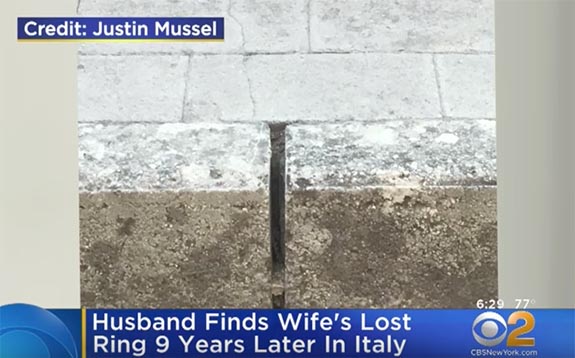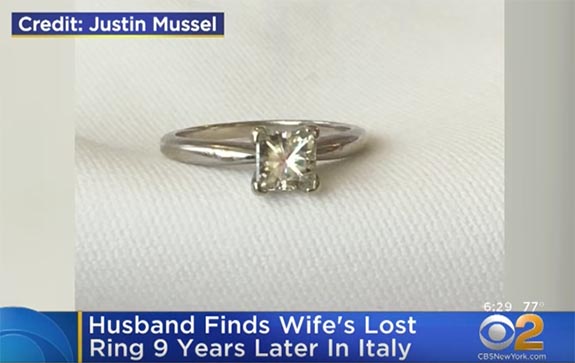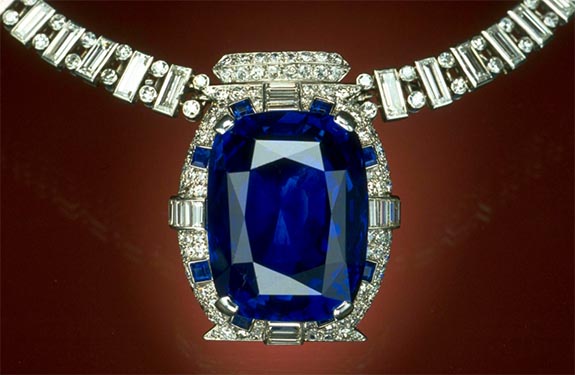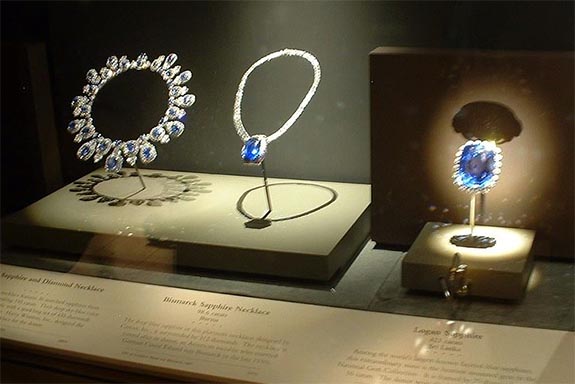Welcome to Music Friday when we bring you awesome songs with jewelry, gemstones or precious metals in the lyrics or title. Today, Mark Knopfler scores a "beautiful find" in his 2006 release, "I Dug Up a Diamond."

When taken literally, the song written by Knopfler is about a diamond miner who makes an unbelievable discovery. Metaphorically, "I Dug Up a Diamond" is about a man who's been on a seemingly hopeless search for the love of his life — and then finally finds her.
He sings, "I dug up a diamond / Rare and fine / I dug up a diamond / In a deep dark mine / If only I could cling to / My beautiful find / I dug up a diamond / In a deep dark mine / My gem is special / Beyond all worth / As strong as any metal / Or stone in the earth."
Providing the sweet harmonies for "I Dug Up a Diamond" is country legend Emmylou Harris. The pair had been friends since the late 1980s and decided to collaborate on an album, which they titled All the Roadrunning. Their work earned critical acclaim as the album peaked at #17 on the U.S. Billboard 200 chart.
The 68-year-old Knopfler, who is best known as the frontman for Dire Straits, was born in Glasgow, Scotland, and grew up in Northumberland, England. Both are coal mining regions, so it is likely he drew his "I Dug Up a Diamond" lyrical inspiration from first-hand experiences.
A four-time Grammy Award winner, Knopfler is ranked 27th on Rolling Stone's list of the 100 Greatest Guitarists of All Time. Knopfler and Dire Straits have sold more than 120 million records.
Born in Birmingham, Ala., the 70-year-old Harris is a 13-time Grammy winner and a member of the Country Music Hall of Fame. She's collaborated with some of the music industry's biggest names, including Bob Dylan, Linda Ronstadt, Dolly Parton, Roy Orbison, Willie Nelson and Neil Young.
Please check out the video of Knopfler and Harris performing "I Dug Up A Diamond." The lyrics are below if you'd like to sing along...
"I Dug Up A Diamond"
Written by Mark Knopfler. Performed by Mark Knopfler and Emmylou Harris.
I dug up a diamond
Rare and fine
I dug up a diamond
In a deep dark mine
If only I could cling to
My beautiful find
I dug up a diamond
In a deep dark mine
My gem is special
Beyond all worth
As strong as any metal
Or stone in the earth
Sharp as any razor
Or blade you can buy
Bright as any laser
Or any star in the sky
Maybe once in a lifetime
You'll hold one in your hand
Once in a lifetime
In this land
Where the journey ends
In a worthless claim
Time and again
In the mining game
I dug up a diamond
Rare and fine
I dug up a diamond
In a deep dark mine
Down in the darkness
In the dirt and the grime
I dug up a diamond
In a deep dark mine
Credit: Screen capture via YouTube.com.





